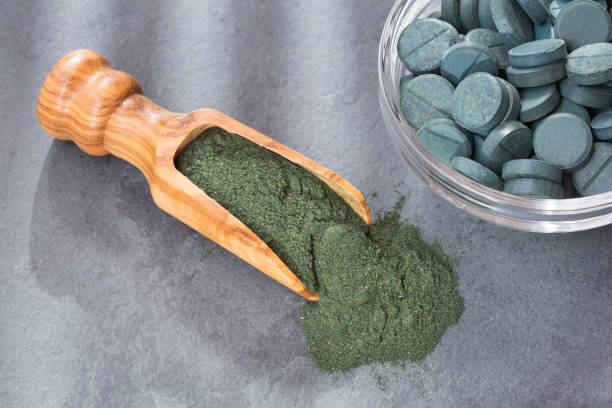
2019. Engineering Corynebacterium glutamicum for the de novo biosynthesis of tailored poly-γ-glutamic acid. 2019. Engineering in vivo production of α-branched polyesters. 64.Zhao M, Huang D, Zhang X, Koffas MA, Zhou J, Deng Y. 2018. Metabolic engineering of Escherichia coli for producing adipic acid via the reverse adipate-degradation pathway. Citation Wang L, Li G, Deng Y. 2020. Diamine biosynthesis: research progress and utility prospects. 54.Rui J, You S, Zheng Y, Wang C, Gao Y, Zhang W, Qi W, Su R, He Z. 2020. High-effectivity and low-cost manufacturing of cadaverine from a permeabilized-cell bioconversion by a lysine-induced engineered Escherichia coli. Li Wang and Guohui Li contributed equally to this work; author order was determined by drawing straws. So as to higher convert ornithine to putrescine, Li et al. Initially, so as to increase the flux to 1,5-diaminopentane, the hom gene (encoding the important thing enzyme l-homoserine dehydrogenase) getting into the competitive threonine pathway was changed with the cadA gene from E. coli based on C. glutamicum ATCC 13032, which produced 1,5-diaminopentane with a titer of 2.6 g/liter (44). Similarly, the genes of E. coli CadA and Streptococcus bovis 148 α-amylase (AmyA) were coexpressed in the pressure deleted the hom gene primarily based on C. glutamicum ATCC 13032. 1,5-Diaminopentane was successfully produced from soluble starch with a titer of 49.Four mM (∼5.1 g/liter) (45). Moreover, the 1,5-diaminopentane production strain was engineered based on C. glutamicum ATCC 13032 lysC311 for sustaining a adequate lysine precursor.

54) carried out methods, resembling promoter optimization, permeabilized cell therapy, and the substrate and cell concentration optimization, to enhance the titer of 1,5-diaminopentane. First, the cost of the inducer was successfully lowered by employing the cad promoter induced by l-lysine to overexpress the cadA gene as a result of this inducer is less expensive than isopropyl-β-d-thiogalactopyranoside (IPTG) and is used as a substrate for conversion to 1,5-diaminopentane. Then, the cell permeability was enhanced by destroying the structure of the cell membrane phospholipid using ethanol, which facilitated the entry of the substrate and the discharge of the product. Then, based on the synthetic small RNA (sRNA) screening and genetic necessity evaluation, pfkA was chosen as a gene knockout goal. First, the ldcC gene (encoding lysine decarboxylase) from E. coli was overexpressed to catalyze the conversion of lysine into 1,5-diaminopentane. Then, the genes encoding aspartokinase (lysC311), dihydrodipicolinate reductase (dapB), diaminopimelate dehydrogenase (ddh), and diaminopimelate decarboxylase (lysA) were overexpressed, which have been related to nearly all enzymes of the biosynthetic route, and the flux of the competing threonine pathway was weakened by utilizing the leaky mutation hom59. 48.Kind S, Kreye S, Wittmann C. 2011. Di-arginine Malate powder procurement, of cellular transport for overproduction of the platform chemical 1,5-diaminopentane in Corynebacterium glutamicum.
2011. The ATP-grasp enzymes. The evaluation found that, in the C4 pathway, the catalytic strategy of Dat and Ddc, the key enzymes for the synthesis of 1,3-diaminopropane, did not require the participation of any cofactors, whereas in the C5 pathway, the catalysis of the limiting enzyme spermidine synthase (SpeE) requires S-adenosyl-3-methylthiopropylamine as a cofactor, which was the main motive for the low effectivity of the C5 pathway. Finally, the speC1 gene from Enterobacter cloacae was found to be the most fitted ornithine decarboxylase gene for putrescine synthesis in C. glutamicum (32). Furthermore, Hwang et al. 32) compared the catalytic properties of 7 ornithine decarboxylases from completely different species. 2020. Catabolism of biogenic amines in Pseudomonas species. 1,5-diaminopentane in Escherichia coli and the C5 pathway is used for the synthesis of 1,3-diaminopropane in Pseudomonas sp. Simultaneously, pycA (encoding the most important anaplerotic enzyme catalyzing the synthesis of oxaloacetate) was modified by introduction of a useful level mutation, P458S, and the expression of this mutant was amplified by replacing native promoter with the robust sod promoter. Both oxaloacetate and α-ketoglutarate are derived from anaplerotic routes by way of phosphoenolpyruvate carboxylase (Ppc) or pyruvate carboxylase (Pyc), which are routes that serve to replenish tricarboxylic acid (TCA) cycle metabolites that are withdrawn for biosynthesis.
1,5-Diaminopentane is formed by adding a 3-carbon skeleton (pyruvate) on the 4-carbon skeleton oxaloacetate first and then removing 2 carbons. 48.Kind S, Kreye S, Wittmann C. 2011. Metabolic engineering of cellular transport for overproduction of the platform chemical 1,5-diaminopentane in Corynebacterium glutamicum. 85.Becker J, Zelder O, Häfner S, Schröder H, Wittmann C. 2011. From zero to hero-design-based methods metabolic engineering of Corynebacterium glutamicum for l-lysine production. 79.Kino K, Arai T, Arimura Y. 2011. Poly-alpha-glutamic acid synthesis using a novel catalytic activity of RimK from Escherichia coli K-12. With increasing consideration on environmental issues and inexperienced sustainable improvement, utilizing renewable raw supplies for the synthesis of diamines is crucial for the institution of a sustainable plastics trade. The page "High - Purity Di - arginine Malate Raw Material" does not exist. N Acetyl Cysteine --- N-Acetyl L-Tyrosine --- L-Alanine --- L-Arginine --- L-Arginine ALPHA-Ketoglutarate 2:1 --- L Arginine L Aspartate --- L-Arginine Monohydrochloride --- D-Aspartic Acid --- L-Aspartic Acid --- Beta-Alanine --- L-Carnitine --- L Carnitine Fumarate --- L Carnitine L Tartrate --- Creatine HCl --- L-Cystine --- L-Glutamic Acid --- L-Glutamine --- Glycine --- L-Histidine HCl-H2O --- L-Isoleucine --- L-Leucine --- L-Lysine --- L-Lysine HCl --- Magnesium L-Aspartate --- L-Methionine --- DL-Methionine --- L-Phenylalanine --- L-Proline --- L-Serine --- L-Theanine --- L-Threonine --- L-Tryptophan --- L-Tyrosine --- L-Valine --- Zinc L-Aspartate.
